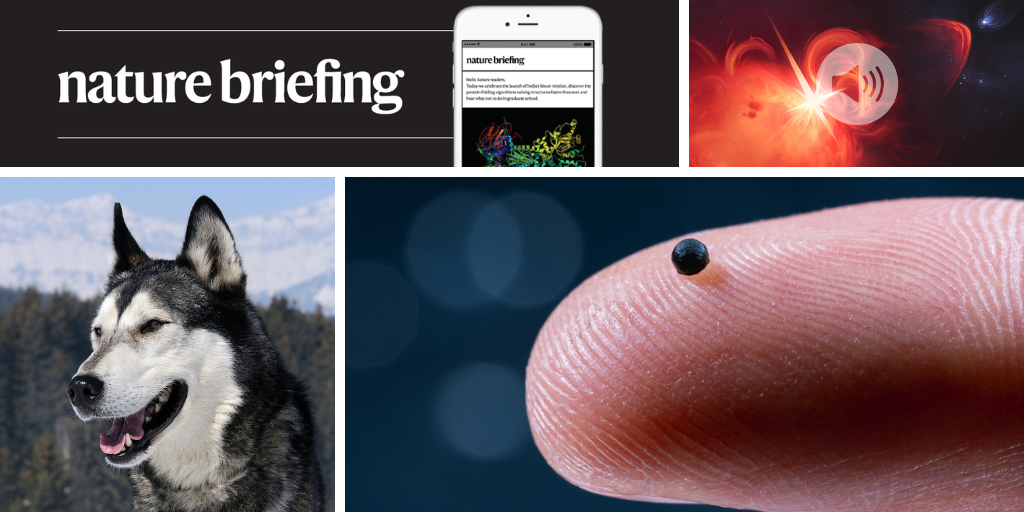
"An analysis of ancient skulls reveals a distinctive dog skull shape - a shortened snout and widened face, compared to wolves - first seen in nearly 11,000-year-old fossils. Not long after, researchers say, there was a boom in the variety of dog skull shapes and sizes, capturing more than half of the diversity in today's breeds. An analysis of the genomes of ancient dogs also suggests that ancient humans valued distinctive features,"
"A remote-controlled 'robot' the size of a grain of sand can swim through blood vessels to deliver drugs before dissolving into the body. The system uses tiny gelatine beads filled with a drug and nanoparticles of iron oxide, which allows its movement to be guided with a magnetic field. The 'microrobots', which have been tested in pigs and sheep, could allow doctors to deliver small doses of drugs to specific sites with less risk of toxic off-target effects."
Nearly 11,000-year-old dog fossils show a distinctive skull shape characterized by a shortened snout and widened face compared with wolves. Shortly after that appearance, skull-shape diversity expanded, producing more than half of the morphological range seen in modern dog breeds. Ancient dog genomes indicate humans selected for distinctive traits and transported or traded dogs with useful characteristics. A remote-controlled microrobot the size of a grain of sand can swim through blood vessels carrying gelatin beads loaded with drugs and iron-oxide nanoparticles for magnetic guidance and has been tested in pigs and sheep for targeted delivery.
#dog-domestication #ancient-genomes #microrobots #magnetic-guided-drug-delivery #ai-physics-learning
Read at Nature
Unable to calculate read time
Collection
[
|
...
]